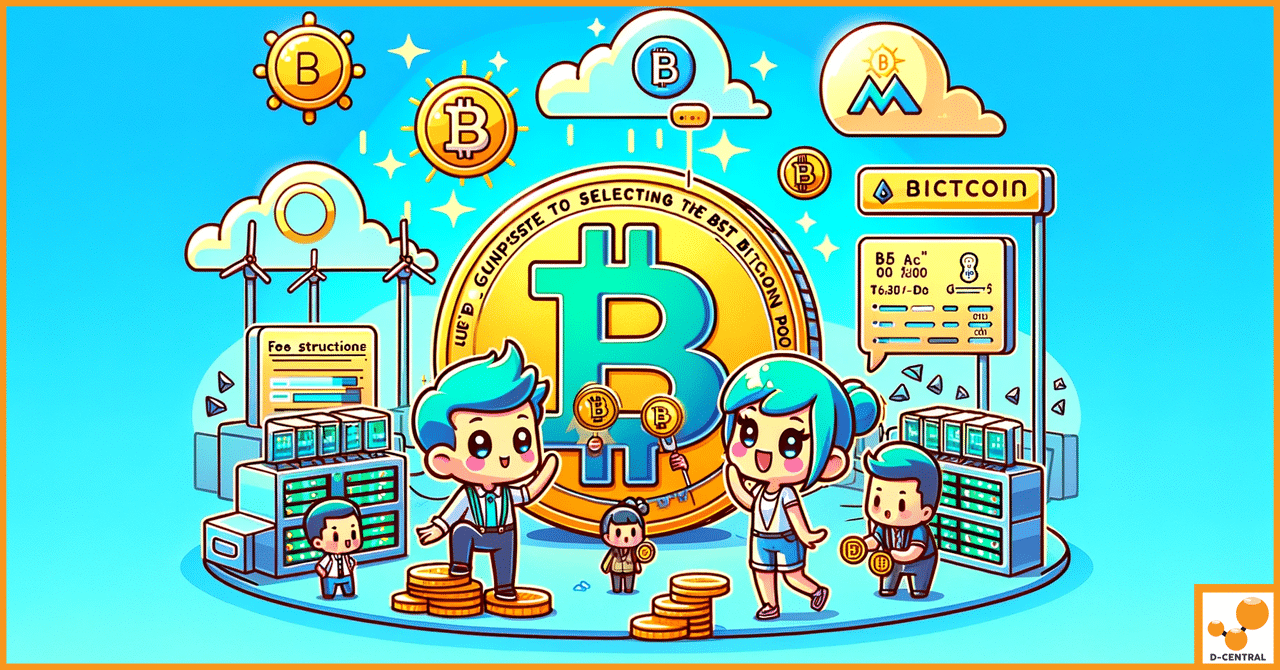
Why Proof of Work Wins: A Deep Dive into Blockchain Security Mechanisms
Blockchain technology has rapidly evolved from a niche concept to a cornerstone of the modern digital world. At its core,
4479 Desserte Nord Autoroute 440, Laval, QC H7P 6E2

In the dynamic world of cryptocurrency, Bitcoin mining stands as a cornerstone activity, essential for maintaining the blockchain’s integrity and facilitating the creation of new bitcoins. At its core, Bitcoin mining involves solving complex cryptographic puzzles, a process that not only validates transactions but also plays a crucial role in the decentralized governance of the Bitcoin network. However, as the Bitcoin network has grown exponentially, so too has the difficulty of mining, transforming it from a solo endeavor to a highly competitive and resource-intensive operation.
This is where Bitcoin mining pools become pivotal. Mining pools are groups of miners who combine their computational power to increase their chances of successfully mining Bitcoin. By pooling resources, individual miners can work together to achieve more consistent and reliable rewards, as opposed to the sporadic and uncertain gains of solo mining. The rewards are then distributed among pool members, proportional to the amount of computational power each contributed.
The choice of a mining pool is a critical decision for any miner. It’s not just about joining the largest pool or the one with the lowest fees. The right mining pool aligns with the miner’s objectives, hardware capabilities, and values. Factors such as the pool’s payout structure, fees, size, and even its geographical location can significantly impact a miner’s efficiency and profitability. Moreover, with the evolving landscape of Bitcoin mining, including regulatory changes and technological advancements, selecting an appropriate mining pool has become more complex yet increasingly vital.
Bitcoin mining pools are a critical innovation in the landscape of cryptocurrency mining. Essentially, a mining pool is a collective of miners who combine their computational resources over a network to increase their chances of successfully mining a Bitcoin block. The primary purpose of these pools is to aggregate the processing power of individual miners, thereby creating a stronger and more efficient collective force capable of competing in the Bitcoin network’s mining process.
In the early days of Bitcoin, individual miners could mine new blocks using standard computers. However, as Bitcoin gained popularity and the network difficulty increased, it became nearly impossible for solo miners to compete with large-scale, professionally equipped mining operations. Mining pools emerged as a solution to this challenge, democratizing the mining process by allowing individual miners with less computational power to participate and earn rewards more consistently.
How Mining Pools Work
A Bitcoin mining pool works by pooling the hash power of its participants. When one of the miners in the pool successfully mines a new block, the reward is distributed among all members of the pool. This distribution is typically proportional to the amount of computational power (hash rate) each miner contributed to the pool.
The process begins with the pool operator distributing a mining task to the miners in the pool. Each miner then uses their hardware to solve complex cryptographic puzzles. If a miner successfully solves a puzzle and mines a block, the new block is added to the blockchain, and the reward, usually in the form of bitcoins and transaction fees, is credited to the pool. The pool then distributes these rewards to its members based on the agreed-upon terms.
Significance in the Bitcoin Network
Mining pools hold significant importance in the Bitcoin network for several reasons:
Bitcoin mining pools are an indispensable part of the cryptocurrency mining ecosystem. They not only enable individual miners to remain competitive but also play a vital role in maintaining the health and security of the Bitcoin network. Understanding how these pools operate and their significance is essential for anyone involved in Bitcoin mining.
The world of Bitcoin mining pools is diverse, with various types offering different reward structures and risk profiles. Understanding these types can help miners choose a pool that best aligns with their mining goals and risk tolerance. Here are some of the most common types of Bitcoin mining pools:
1. Pay-Per-Share (PPS) Pools
2. Pay-Per-Last-N-Shares (PPLNS) Pools
3. Other Types of Mining Pools
Each type of mining pool has its unique characteristics and reward structures. Miners should consider their individual preferences for risk, reward consistency, and the pool’s alignment with their mining objectives when choosing a pool type. Understanding these differences is crucial in making an informed decision that maximizes mining efficiency and profitability.
Selecting the right Bitcoin mining pool is a decision that can significantly impact your mining efficiency and profitability. Various factors need to be considered to ensure that the chosen pool aligns with your mining goals and resources. Here are key considerations to keep in mind:
1. Pool Fees and Payout Structure
2. Pool Size and Hash Rate
3. Reputation and Trustworthiness
4. Geographic Location and Server Security
5. User Interface and Support
Choosing the right mining pool requires careful consideration of various factors, including fees, payout structure, size, hash rate, reputation, location, security, and user support. By evaluating these aspects, you can select a mining pool that best suits your needs and maximizes your Bitcoin mining endeavors.
In the realm of Bitcoin mining, the choice of the mining pool can significantly influence your mining success. Here’s an overview of some of the leading mining pools, along with their features, advantages, and considerations:
1. Poolin
2. Braiins Pool (formerly Slush Pool)
3. Antpool
4. F2Pool
5. BTC.com
6. ViaBTC
Each of these top Bitcoin mining pools has its unique features and advantages. When choosing a pool, consider factors like the pool’s size, fee structure, payout method, security measures, and user interface. Your choice should align with your mining goals, hardware capabilities, and risk tolerance.
Achieving optimal efficiency in Bitcoin mining is crucial for maximizing profitability. This involves not only selecting the right mining pool but also leveraging the best hardware and services. Here are strategies to enhance mining efficiency and the role of ASIC miners and D-Central’s services in this process.
1. Strategies to Enhance Mining Efficiency with the Right Pool
2. Role of ASIC Miners in Optimizing Mining Operations
3. D-Central’s Services in Enhancing Mining Operations
Maximizing mining efficiency involves a combination of choosing the right pool, using efficient hardware like ASIC miners, and taking advantage of expert services like those offered by D-Central. By focusing on these areas, miners can enhance their operations, reduce costs, and increase their Bitcoin mining profitability.
Navigating the complex world of Bitcoin mining can be a challenging yet rewarding endeavor. The selection of the right mining pool is a pivotal decision that can significantly impact your mining success.
In your quest for mining efficiency and profitability, remember that the right tools and expertise can make a significant difference. D-Central Technologies stands as a beacon in the Bitcoin mining landscape, offering a suite of services tailored to your mining needs. From expert ASIC repair to comprehensive mining solutions, D-Central is equipped to enhance your mining operations.
We encourage you to explore the array of services offered by D-Central Technologies. Whether you’re looking for advanced ASIC miners, expert repair services, or guidance on optimizing your mining setup, D-Central is your go-to resource. Visit D-Central Technologies to discover how we can assist you in maximizing your Bitcoin mining endeavors.
For further inquiries or personalized assistance, don’t hesitate to reach out. Contact D-Central Technologies through our website, where our team of experts is ready to support you in taking your mining operations to the next level.
What is a Bitcoin mining pool?
A Bitcoin mining pool is a group of miners who combine their computational resources to increase their chances of successfully mining Bitcoin, sharing the rewards among members proportional to each one’s contribution.
Why are Bitcoin mining pools important?
Mining pools are important because they offer individual miners more consistent and reliable rewards, contribute to the stability and security of the Bitcoin network, and prevent the centralization of mining power.
How do Bitcoin mining pools work?
Miners in a pool combine their hashing power to mine blocks more efficiently. When a block is mined by the pool, the reward is distributed among members based on the agreed-upon terms, usually proportional to the computational power each miner contributed.
What are the different types of Bitcoin mining pools?
The types of mining pools include Pay-Per-Share (PPS), Pay-Per-Last-N-Shares (PPLNS), Proportional pools, Score-Based pools, and Hybrid pools, each with different reward structures and risk profiles.
What factors should be considered when choosing a mining pool?
When choosing a mining pool, consider pool fees, payout structure, pool size and hash rate, reputation and trustworthiness, geographic location and server security, and the user interface and support of the pool.
What is the role of ASIC miners in optimizing mining operations?
ASIC miners, designed specifically for Bitcoin mining, offer higher efficiency and hash rates compared to general-purpose hardware, thus optimizing mining operations for better profitability.
How can D-Central Technologies enhance mining operations?
D-Central Technologies provides specialized ASIC repair and maintenance, custom solutions, consultation and support, as well as mining hosting services, to help miners optimize their setups and increase mining efficiency.
DISCLAIMER: D-Central Technologies and its associated content, including this blog, do not serve as financial advisors or official investment advisors. The insights and opinions shared here or by any guests featured in our content are provided purely for informational and educational purposes. Such communications should not be interpreted as financial, investment, legal, tax, or any form of specific advice. We are committed to advancing the knowledge and understanding of Bitcoin and its potential impact on society. However, we urge our community to proceed with caution and informed judgment in all related endeavors.
Related Posts

Blockchain technology has rapidly evolved from a niche concept to a cornerstone of the modern digital world. At its core,

In the annals of financial history, the emergence of Bitcoin in 2009 marked a pivotal moment, introducing the world to

In the rapidly evolving world of cryptocurrency mining, efficiency and innovation are paramount. As miners seek to maximize their returns